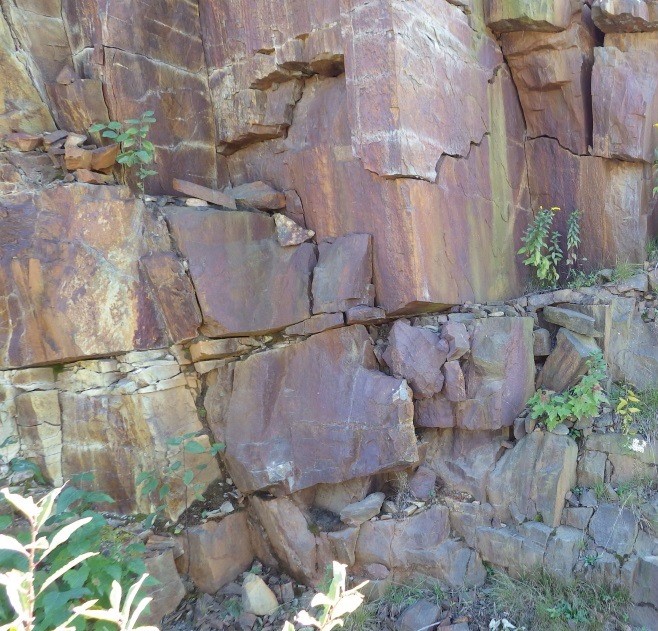Fractured Rock
Abs:Contaminant transport and fate is fundamentally different in fractured rock than in unconsolidated (sand and gravel) aquifers. Significantly more uncertainty exists as to the direction and rate of contaminant migration, as well as the processes and factors that control chemical and microbial transformations.
Contaminant transport and fate is fundamentally different in fractured rock than in unconsolidated (sand and gravel) aquifers. Significantly more uncertainty exists as to the direction and rate of contaminant migration, as well as the processes and factors that control chemical and microbial transformations (USGS 2010). Depending upon the orientation and type of fracture or solution channel, just finding all of the contaminated zones can be a challenge. In addition, contaminated and uncontaminated fracture zones can lie above or below each other and drilling stands the risk of opening a conduit between the two that was not present before.
Rock formations can have both secondary and primary porosity. Secondary porosity, the result of chemical leeching of minerals or the generation of a fracture system, is the primary source of fluid movement in rocks. The network of interconnected fractures (and solution channels in the case of karst) allows fluid movement through rock formations with very low primary porosity. Dissolved contaminants and fluids will generally spread through fracture networks.
Primary porosity is the inherent ability of the rock matrix to accept and transport fluids. Poorly cemented sandstones have relatively high primary porosity and will allow fluids to move through them. Rock with a crystalline matrix, such as granite, will not readily transport fluids, and the matrix acts as a barrier to water and contaminants. The primary porosity of a rock also is important to fate and transport considerations in that the more porous a rock matrix is, the greater the potential for dissolved contaminants to diffuse into it. Shales, for example, whose matrix comprises primarily clay and silt particles, are moderately impermeable to water flow through the matrix but still have sufficient porosity to allow for the diffusion of contaminants into the matrix (Vitolins et al. 2004). This diffusion is an important consideration in the construction of a conceptual site model and selection of a site remedy because the contaminants in the rock matrix could become a contaminant source zone if the concentration in the fractures falls below the concentration of contaminants in the rock matrix (Doe 2010a).
In some cases contaminants can be introduced to the fractured rock system as a non-aqueous phase liquid. These liquids are hydrophobic and can be lighter or heavier than water. In this situation, multi-phase flow will occur. Doe (2010a) describes the flow as follows:
In multiphase flow, density-based gravitational forces come into play along with capillary forces that act along the interfaces between the fluids (or gasses) and the solid surfaces of the pores or fractures. The significance of these forces — gravity, viscosity, and capillarity — vary with the pore size or fracture aperture, where capillarity dominates in smaller pores or fractures and gravity dominates in larger ones. In a multiphase flow system, capillary pressures can immobilize wetting phase fluid in the smallest aperture fractures. In larger fractures, flow occurs according to Darcy’s law but with different permeabilities for each phase that depend on their saturations. In the largest fractures, gravity dominates flow, producing a variety of non-Darcian flow processes that may be very rapid and are still poorly understood.
